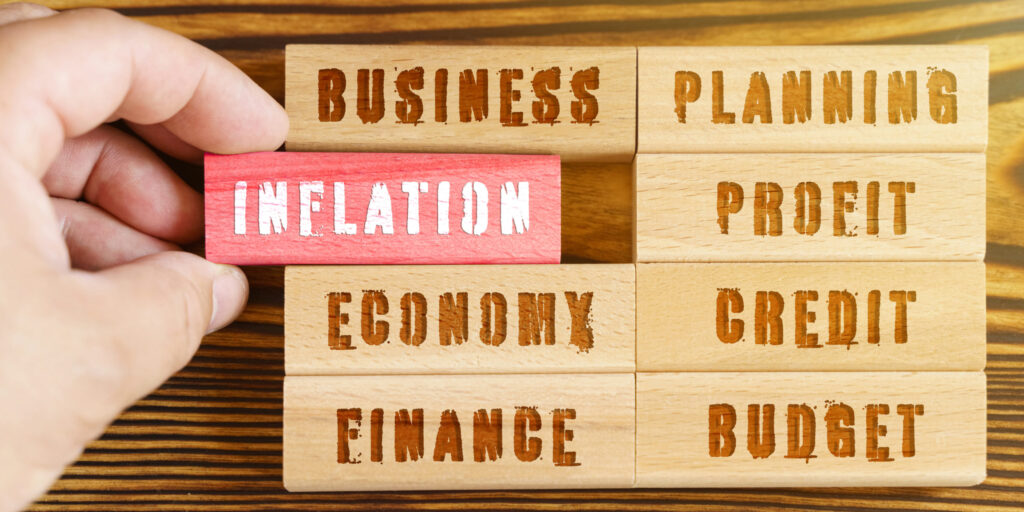Inflation, which is described as a general increase in prices and fall in the purchasing value of money, erodes purchasing power over time. It is a pressing topic at present, particularly for retirees on a fixed income.
COVID-19 has increased inflation risk. Indeed, the price index for gross domestic purchases increased 5.7 percent in the second quarter, much higher than the sub-2% rates we’ve enjoyed over the past few years. Some of the rapid rise reflects recovery from the depths of the pandemic, which drove inflation to abnormally low levels. While the movement of the index was concentrated in a few key categories such as used cars and gasoline, there have been prices rises in many industries. A key question is whether inflation will be permanent or transitory, and if transitory how long we should expect rapid inflation to continue.
COVID-19 impacted both supply and demand for goods and services, and the recovery produces effects on both sides. First, workers have been slow to return to jobs and departed some sectors in search of better opportunities. Companies have offered higher wages to lure workers, in some cases unemployment benefits provide an incentive for workers to delay their return to work and health impacts of the pandemic have made some workers completely unavailable.
Pandemic-induced production disruptions have caused supply chain bottlenecks. Finally, unprecedented levels of government spending ($5.4 Trillion), expanded credit ($4.0 Trillion), and pent-up consumer demand amplify the impact of supply shortages.
Various factors will mitigate these inflationary effects going forward. Unemployment benefits and many stimulus measures taper off beginning this September which should incent workers to return to work. Supply chain bottlenecks will resolve as prices rise, although the speed of adjustment will vary by market. For instance, the construction lumber market has adjusted quickly while the market for microchips used in many consumer goods may take much longer.
Finally, while the Federal Reserve has signaled it will begin to curtail the growth of its balance sheet, i.e., taper its purchases of government bonds, in late 2021 or early 2022 they’ve also signaled that they may let inflation run above its stated 2% target for a period of time. This seems to signal a very gradual and measured pace with respect to normalizing interest rates.
However, the consensus of policymakers is to support recovery and drive down unemployment even if it means a brief period of higher inflation. The path of least resistance and the lesser of two evils is to keep rates too low for too long versus the alternative of raising interest rates too quickly. The risk of “too low for too long” is even loftier valuations and the growing presence of bubble-like conditions.
How long will this myriad of inflationary conditions persist? It is too soon to tell, but it might be a year or more before inflation cools off. Investors should be expecting more volatility as the debate over whether inflation is permanent or transitory continues. We expect that markets will be forward-looking with respect to inflation and inflation expectations.
If it is evident that more rapid inflation is permanent, investment strategies that have proved effective over the last twenty years will undoubtedly have to be revised. In short, this would involve a favoring of hard assets e.g., commodities, real estate and gold, over financial assets. For now, we are vigilantly monitoring signs that inflation may be here to stay and are crafting contingency plans to reposition portfolios as needed. Stay tuned for more!

